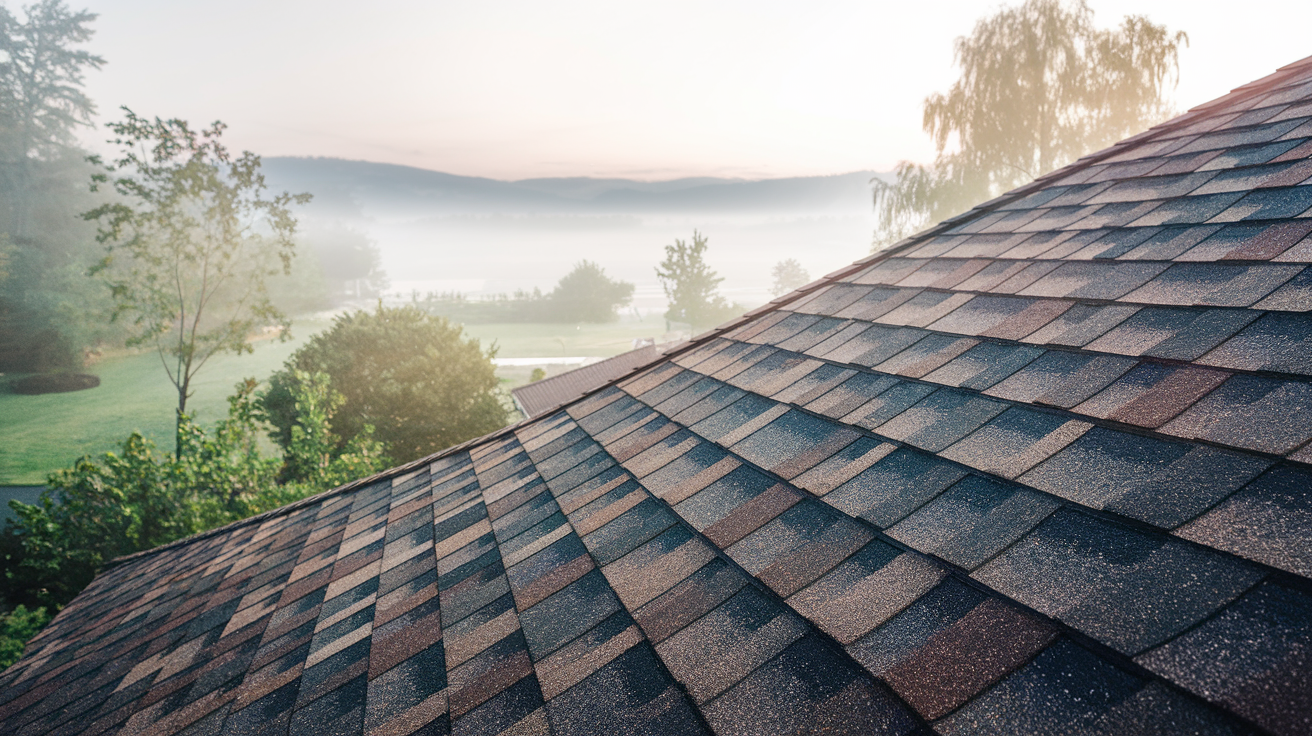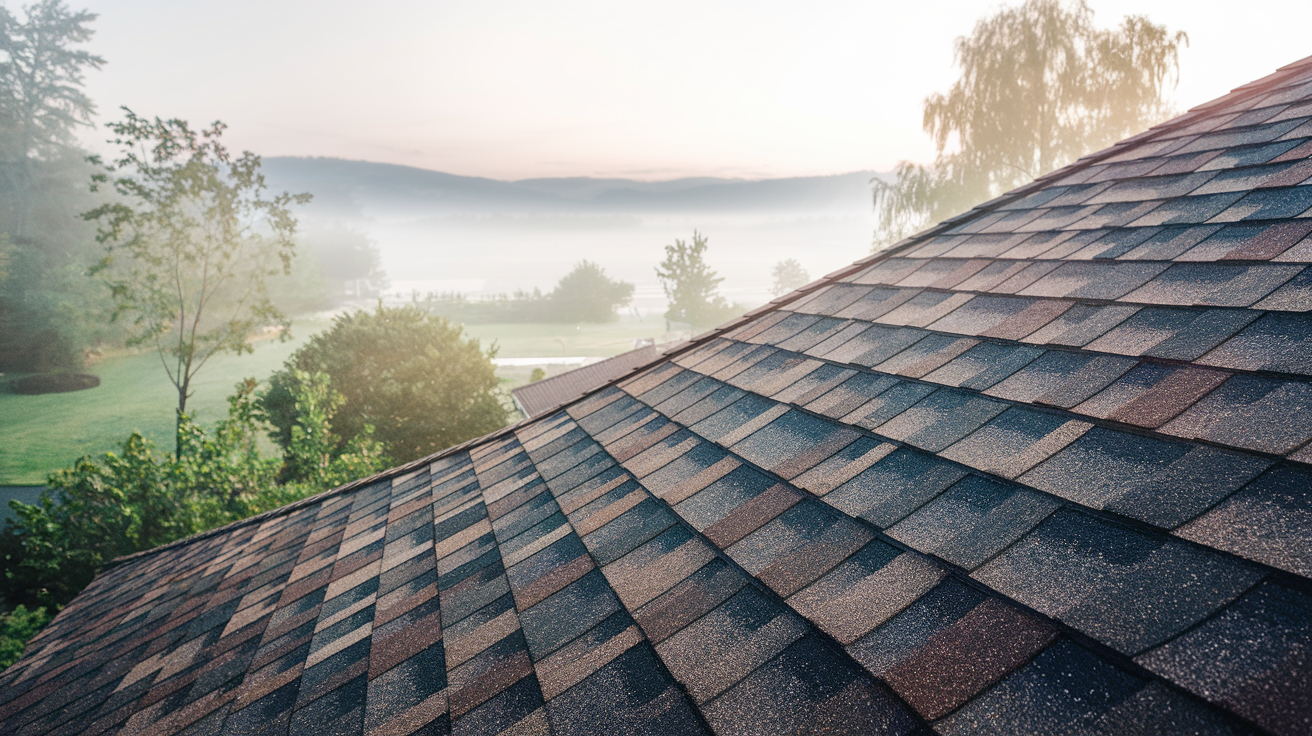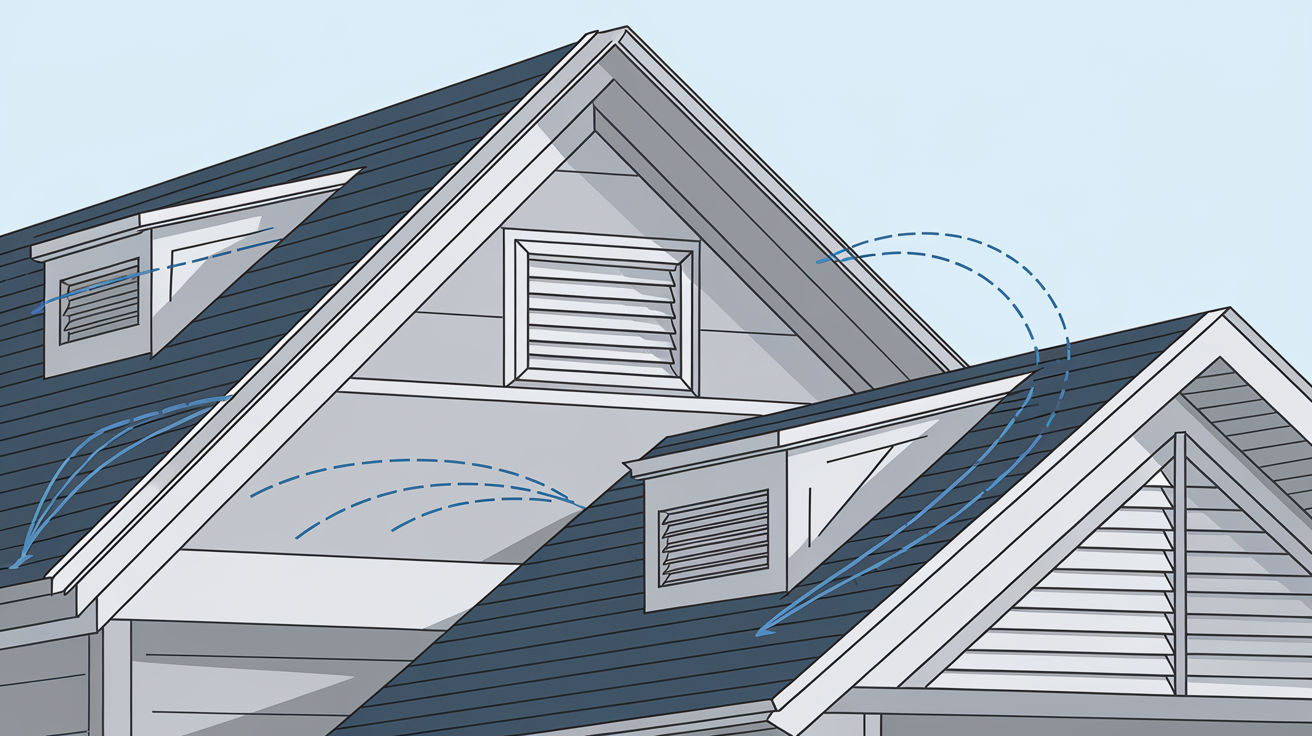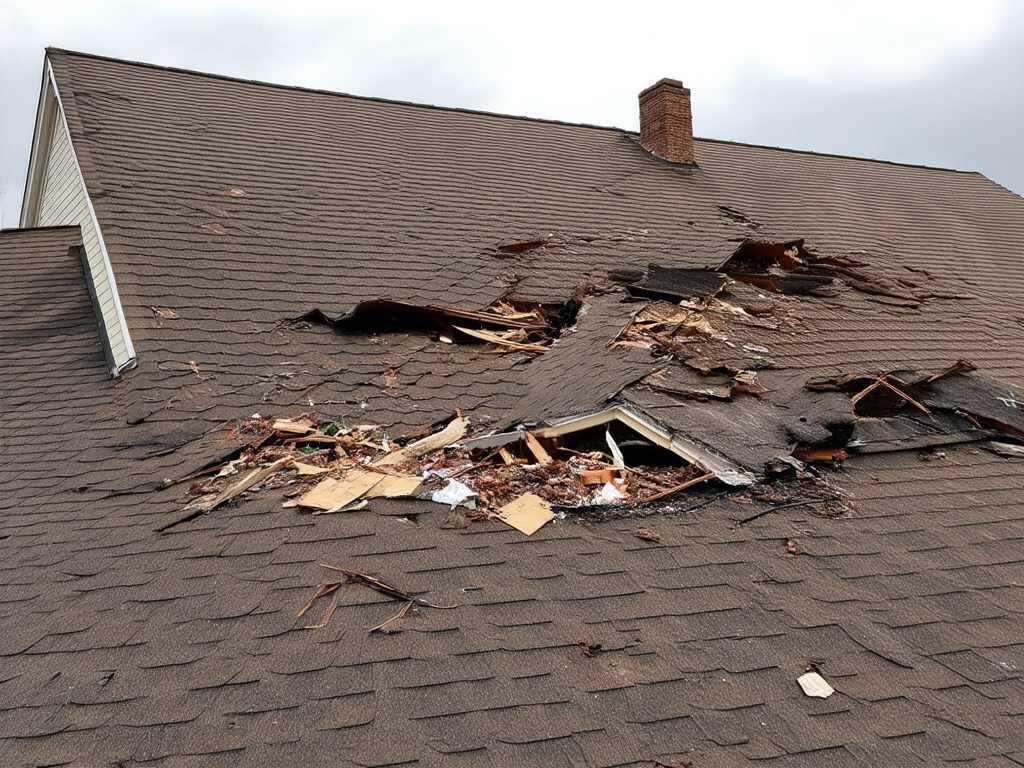Prevent Costly Roof Damage: Expert Guide to Humidity Control
Is your roof silently deteriorating due to excess moisture? Every year, humidity-related damage costs American homeowners millions in repairs, with 70-75% of all building failures traced back to moisture problems (Source: Building Research Institute). What starts as subtle condensation can quickly escalate into serious structural issues, mold growth, and costly repairs ranging from $750 to $2,000 for basic fixes, and up to $10,000 for extensive damage (Source: National Roofing Contractors Association).
Your roof's health directly impacts your home's value, energy efficiency, and your family's wellbeing. High humidity levels create perfect conditions for mold growth, wood rot, and metal corrosion - issues that compromise your roof's integrity and can lead to complete roof failure if left unchecked. Understanding humidity's effects on your roof is crucial for protecting your investment and preventing expensive repairs.
In this comprehensive guide, you'll discover practical strategies to protect your roof from moisture damage, including proper ventilation techniques, early warning signs to watch for, and cost-effective prevention measures. We'll explore region-specific solutions and help you understand when to take action before minor issues become major problems.
Table of Contents
- Understanding Humidity and Its Impact on Your Roof
- Preventing Mold, Rot, and Other Moisture-Related Issues
- Addressing Moisture-Related Damage and Costs
- Strategies for Long-Term Humidity Control
- Regional Considerations for Humidity Management
Understanding Humidity and Its Impact on Your Roof
Humidity, the amount of moisture in the air, significantly impacts roof structures. High humidity levels lead to condensation on your roof, creating an environment ripe for mold and rot. Even mist and rain can elevate outer roof humidity, encouraging mold, mildew, and leaks. These problems compromise roof integrity, increase energy bills, and decrease property value. Repair costs can range from $750 to $2,000, potentially including underlayment replacement. Understanding humidity's effects allows proactive measures to protect your home. Consider a Get Your Roof Assessment to identify potential humidity-related issues.

What Is Humidity and How It Affects Roof Structures
Humidity is the concentration of water vapor in the air. High humidity, especially above 20%, causes condensation on interior wooden roof components, leading to rot if unchecked. Consistently high attic humidity puts your roof's wooden supports at risk. Prolonged moisture accelerates wood decay, corrodes metal roofing, stains clay, and causes freeze-thaw damage. This weakens the roof and increases the risk of leaks and structural failures. For example, studies have shown moisture can damage roofing felts, a crucial protective layer, which can cause premature roof failure. To learn more about roof maintenance and prevent these issues, regular inspections are crucial.
Effects of Humidity on Roof Structures
- Condensation on wooden components
- Wood decay and rot
- Corrosion of metal roofing
- Staining of clay tiles
- Freeze-thaw damage
Moisture is a leading cause of building failures, with studies attributing 70-75% of issues to moisture-related problems. This highlights the importance of addressing humidity promptly. Excessive humidity causes significant roof damage, including moisture buildup and mold growth. These issues necessitate costly repairs and pose health risks from mold exposure. Mold thrives in damp environments, and leaky roofs provide ideal growth conditions, often in attics or behind walls.

Early detection of humidity damage prevents extensive roof problems. Visible signs include large wet spots on the roof deck's underside, indicating leaks or moisture intrusion. Regularly inspecting your attic is recommended. However, not all damage is visible. Hidden signs include increased energy bills from compromised insulation or subtle attic mold growth. Regular inspections and maintenance identify hidden issues, enabling timely interventions. Studies in specific climate zones have found no visible moisture damage, but underlying moisture can exist without visible damage. Schedule a Get Your Roof Assessment for a thorough evaluation of your roof's condition.
Signs of Humidity Damage Checklist
- Large wet spots on roof deck
- Mold growth
- Increased energy bills
- Subtle attic mold growth
Moisture can quietly damage your roof. It often goes unnoticed until major problems occur. Mold growth and wood rot are costly and can be harmful to your health. Studies show that moisture causes 70-75% of building failures. This means most building problems, like rotting wood and corroded metal, come from moisture. Preventing moisture is key. Too much moisture in wood can cause mold, rot, rust on metal, and make insulation less effective.
Importance of Regular Roof Inspections
Regular roof inspections are important for finding moisture problems early. Check your attic for leaks. Look for water stains or cracks.
How to Inspect Your Attic
Start by looking for obvious signs of leaks. Dripping water or cracks in the roof are clear indicators. Also, check the underside of the roof deck for wet spots. Large, localized wet spots directly below a suspected leak are a telltale sign. Look for mold too. Mold often looks fuzzy or discolored. Inspect your roof twice a year. This helps catch moisture problems early and saves you money on repairs.
Attic Inspection Process
- Look for signs of leaks: dripping water, visible cracks
- Check underside of roof deck for wet spots
- Inspect for mold: fuzzy or discolored patches
- Conduct inspections twice a year
What to Do if You Find Moisture
If you find moisture, fix it quickly to prevent more damage. You might need to fix a leak, improve ventilation, or call a roofing expert. If you find mold, deal with it right away because it can cause health problems. Consider scheduling a Get Your Roof Assessment to identify potential issues early on.
Effective Ventilation Practices for Different Roof Styles
Good ventilation prevents moisture buildup in your attic, which can lead to mold and rot. Attic ventilation is especially important in humid climates where trapped hot air makes moisture problems worse. High humidity can cause significant roof damage over time, including mold growth.
Gable Roofs
For gable roofs, install vents at the ridge and eaves. This creates natural airflow and keeps the attic dry. This airflow removes extra moisture and controls attic temperature. Learn more about roof maintenance to understand the importance of ventilation.
Hip Roofs
Hip roofs don't ventilate well. Use both soffit and ridge vents for good air circulation. Soffit vents go under the eaves. Combining these vents helps maximize airflow, which is often limited in hip roofs compared to gable roofs. Attic ventilation is a smart choice in humid tropical climates to avoid trapping hot air.

Choosing Mold-Resistant Materials and Their Benefits
Using mold-resistant materials is another way to fight moisture damage. These materials stop mold from growing, even in high humidity. Mold-resistant insulation and drywall protect your home's interior from mold.
Other Mold-Resistant Materials
Other options for reducing moisture include vapor-permeable diffusion caps at roof peaks and better roof deck ventilation. Roofing materials that shed water well, like metal roofs or asphalt shingles with algae-resistant granules, can also prevent mold. Too much humidity can cause condensation on your roof, which leads to mold.
Mold-Resistant Materials Benefits
- Prevents mold growth
- Protects home's interior
- Water-shedding capabilities
- Reduces maintenance costs
Cost Savings
Mold-resistant materials cost more upfront but save you money in the long run. They reduce maintenance costs and keep your home strong. Roof repairs can cost between $750 and $2,000, depending on the damage. You may also need to replace damaged underlayment. Mold and rot repair can cost $1,000 to $10,000 or more. If you find mold, you might need to clean or remove contaminated materials. By following these tips, you can protect your roof from moisture damage. Regular inspections, proper ventilation, and the right materials will help you keep a healthy and long-lasting roof.
This section discusses the costs associated with moisture damage and outlines cost-effective preventative measures. It also emphasizes the importance of professional roof assessments.
Typical Costs of Repairing Humidity Damage
Humidity can quietly wreak havoc on your roof, leading to costly repairs if left unchecked. High humidity causes condensation, creating a breeding ground for moisture-related problems like mold. Basic roof repairs, like fixing leaks or replacing shingles, typically cost between $750 and $2,000. These repairs sometimes include replacing the underlayment, the protective layer under your shingles. However, if mold or rot develops, repairs can cost $1,000 to $10,000 or more, depending on the damage. Moisture can cause many issues, including wood decay, metal corrosion, stained clay tiles, and freeze-thaw damage. These problems increase repair costs over time. Industry data shows that moisture is a leading cause of building failures, contributing to 70-75% of all building issues. Understanding these potential costs underscores the importance of prevention. Consider scheduling a Get Your Roof Assessment to identify potential issues early.
| Repair Type | Estimated Cost |
|---|---|
| Basic Roof Repairs | $750 - $2,000 |
| Mold and Rot Repairs | $1,000 - $10,000+ |
Cost-Effective Prevention Measures
Preventing moisture damage is cheaper and easier than fixing it later. Effective prevention starts with regular roof inspections. These inspections can reveal early signs of moisture, such as dark spots, mold growth, or large wet spots under the roof. Ideally, you should inspect your roof twice a year, in spring and fall. Learn more about roof maintenance to understand best practices. Good attic ventilation is key to reducing moisture, especially in hot, humid climates. Ventilation helps remove excess moisture and regulate attic temperature. Other helpful measures include using vapor-permeable diffusion caps at roof peaks to allow moisture to escape. Improving roof deck ventilation by increasing airflow within the attic also helps. Other preventative steps include ensuring proper attic air leakage, both indoors and outdoors, and addressing any water leaks to the roof sheathing. Even in cold climates, proper attic ventilation is crucial, as un-ventilated attics are at greater risk for moisture problems. These preventative measures can save homeowners thousands on repairs and extend the life of their roofs.
Professional Roof Assessment: Why It Matters
A professional roof assessment is vital for protecting your roof and preventing moisture damage. Professionals can spot hidden problems you might miss. They look for active leaks, signs of moisture under the roof deck, and check the moisture content of wooden components. For example, if your attic's humidity is above 20%, condensation can form and rot wooden components if not addressed. Professionals also check your roof's ventilation system to ensure it meets standards for preventing moisture buildup. This may include measuring attic ventilation rate and airflow distribution. Research shows a direct link between attic ventilation and mold growth. Many professionals use advanced tools like drones or AI-powered technology for a thorough roof analysis. This proactive approach helps avoid costly repairs and protects your property value by ensuring your roof lasts. Schedule a Get Your Roof Assessment today.
Strategies for Long-Term Humidity Control
Managing humidity is crucial for protecting your roof and preventing moisture damage. High humidity can cause mold, wood rot, and even structural problems. Effective humidity control extends your roof's lifespan and avoids expensive repairs. Let's explore three key strategies: insulation and weatherproofing, sustainable roofing materials, and landscaping.
Insulation and Weatherproofing Techniques
Proper insulation and weatherproofing are essential for controlling humidity. Insulation creates a barrier against moisture. Quality insulation minimizes condensation, a major cause of mold and rot. Here are some important techniques:
- Vapor Barriers: Vapor barriers limit moisture penetration. They block water vapor from entering the roof and attic, reducing condensation. While effective, vapor barriers don't eliminate the need for other ventilation methods like enhanced roof deck ventilation and increased air mixing.
- Sealing Leaks: Sealing all possible moisture entry points is vital. This includes inspecting areas around chimneys, skylights, and roof valleys for leaks. Check the underside of your roof deck for active leaks or moisture, which often appear as large wet spots. Regular roof maintenance and inspections prevent minor leaks from worsening.
- Enhanced Ventilation: Ventilation systems, like ridge and soffit vents, circulate air and lower humidity. Proper ventilation prevents heat and moisture buildup that can damage roofing materials. Research confirms that attic ventilation reduces moisture, especially important in hot, humid climates. Research also highlights the connection between ventilation rates and mold growth, particularly during dormer energy upgrades.
Sustainable Roofing Materials and Their Benefits
Choosing the right roofing materials significantly impacts your home's humidity management. Sustainable materials resist moisture and provide long-term roof protection.
- Metal Roofing: Durable metal roofing resists moisture damage better than traditional materials like felt, which is susceptible to moisture damage. Metal roofing also reflects heat, reducing condensation.
- Cool Roofs: Cool roofs reflect sunlight and absorb less heat. By staying cooler, they reduce moisture problems like mold and mildew.
- Recycled Materials: Recycled roofing materials are eco-friendly and offer enhanced moisture resistance, often featuring protective coatings that further mitigate humidity.

The Role of Landscaping in Managing Humidity
Landscaping plays a crucial role in humidity control. Strategic landscaping directs water away from your foundation and lowers humidity near your roof.
- Gutters and Downspouts: Well-maintained gutters and downspouts channel rainwater away from your roof and foundation. Clogged or improperly positioned gutters can cause water to pool, increasing humidity.
- Tree Placement: Trees provide shade and reduce heat absorption. However, keep trees away from your roof to prevent falling leaves and branches from trapping moisture and causing damage. Consider getting a roof assessment to identify potential issues.
- Ground Cover: Ground cover plants absorb excess moisture, preventing it from reaching your foundation. This helps control humidity and improves your landscape's appearance. You can learn more about roof maintenance to understand the importance of landscaping. Implementing these long-term humidity control strategies protects your roof from moisture damage. Investing in proper insulation, sustainable materials, and strategic landscaping helps homeowners maintain a healthy, long-lasting roof and minimize the risk of mold, rot, and other moisture-related issues.
Regional Considerations for Humidity Management
This section explores how different climates require specific strategies to manage humidity and prevent moisture-related roof damage. Understanding these regional differences is key to choosing the right solutions for your roof.
Climate-Specific Challenges and Solutions
Different climates present unique challenges for managing roof humidity. In humid regions like the southeastern United States, high moisture levels encourage mold and mildew growth, compromising roof integrity and potentially causing health problems. Industry data shows that moisture contributes to 70-75% of building failures. High humidity can cause significant roof damage over time, leading to moisture buildup and mold growth. Excessive humidity can lead to condensation, creating a breeding ground for moisture-related issues. A University of Florida study confirmed that attic ventilation reduces moisture buildup in hot, humid climates. Proper ventilation helps prevent issues like wood decay, metal corrosion, and staining caused by excess moisture. Research in specific climate zones indicated that proper ventilation kept roof deck moisture content at or below 10% during warmer months. Consider getting a roof assessment to determine the best ventilation strategy for your home. Extremely cold climates present different challenges. Unventilated attics in these regions face higher risks of moisture problems and resulting rot and mold due to condensation. Adequate insulation and vapor barriers are essential to manage moisture and prevent damage. A humidity level above 20% will create condensation on interior wooden components, causing them to rot if left unchecked. Temperature swings in colder climates worsen this issue, as warm, moist air from inside the house rises into the cold attic and condenses on cooler surfaces. Learn more about roof maintenance to understand how to manage moisture in your attic.
Tailored Ventilation Strategies for Different Regions
Different ventilation strategies are needed for different climates.
Hot and Humid Climates
In hot, humid areas, enhanced roof deck ventilation, vapor-permeable diffusion caps at roof peaks, and increased air mixing can prevent moisture buildup and mold growth. Vapor-permeable diffusion caps allow water vapor to escape while blocking outside moisture. Increased air mixing helps lower attic moisture levels. Check for existing moisture problems by looking for leaks or large, localized wet spots on the underside of the roof deck.
Cold Climates
Proper ventilation is also critical in cold climates. A parametric study highlighted the importance of attic ventilation in extremely cold climates for reducing moisture risks. Effective attic ventilation allows warm, moist air to escape, preventing condensation. This typically involves ridge vents, soffit vents, and a continuous airflow path. Ignoring these issues can result in repairs costing between $750 and $2,000, including replacing damaged underlayment and shingles. By understanding climate-specific challenges and implementing appropriate ventilation strategies, homeowners can manage humidity and protect their roofs from moisture damage, increasing roof lifespan and creating a healthier home.
Disclaimer: This blog post is intended for informational purposes only and should not be considered professional roofing advice. Always consult with qualified roofing contractors and insurance professionals for specific guidance regarding your individual circumstances.
